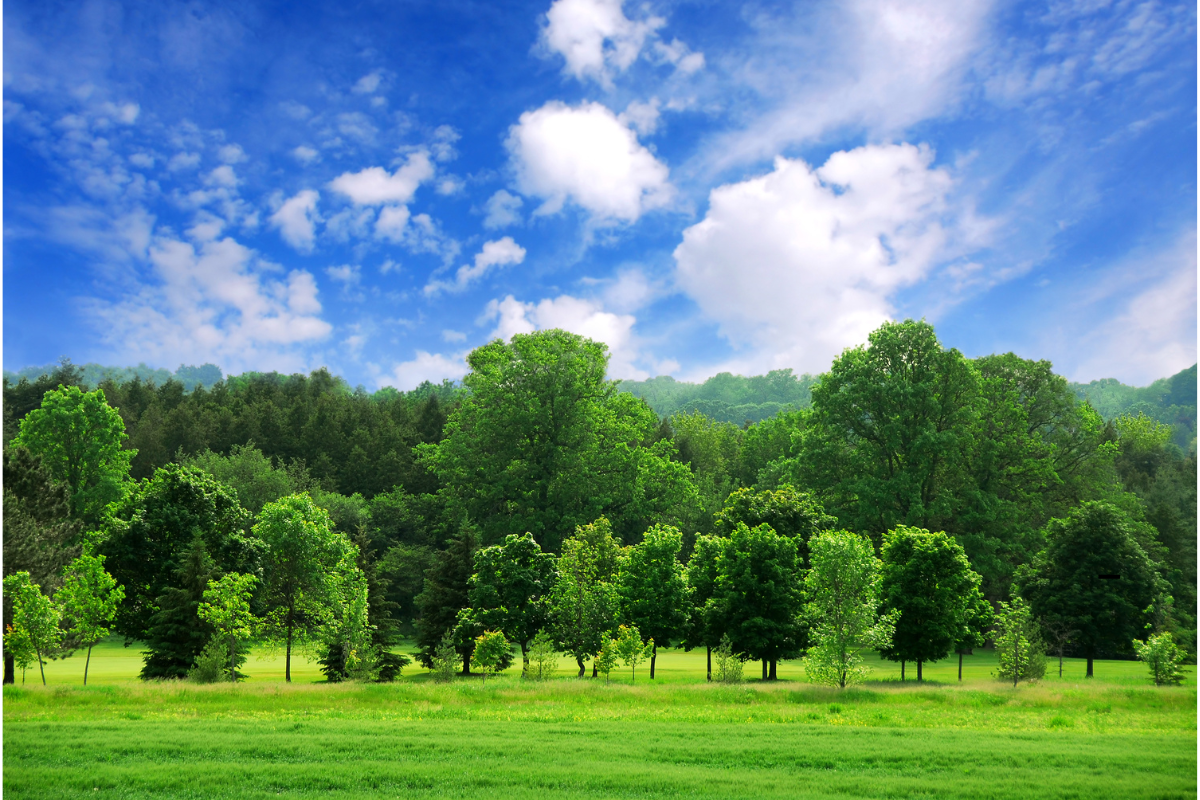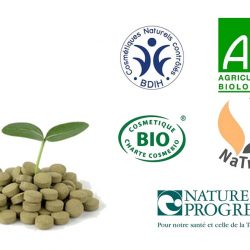Nature is a complex ecosystem, essential to the balance of our planet, but currently threatened by human activities such as deforestation, pollution, climate change and over-exploitation of resources. These threats are compromising biodiversity and vital ecosystem services, making conservation and restoration practices all the more urgent. In response, interest in nature-based solutions, such as agroforestry and the use of medicinal plants, is growing, offering sustainable alternatives for preserving our environment. Balanced management of development and conservation of ecosystems are crucial to maintaining biodiversity and ensuring a sustainable future.
Nature is a complex and fascinating ecosystem that has evolved over the centuries. However, our planet’s biodiversity is under threat from human activity. Yet nature itself can offer us solutions for preserving our environment and our health. The question is, have we discovered all the secrets that nature has to offer?
Nature is a complex system of interdependent living beings that coexist in a fragile balance. It is the product of millions of years of evolution and diversity, which have created an inestimable wealth and biodiversity. Today, however, this biodiversity is threatened by human activity. Deforestation, pollution, climate change and the over-exploitation of natural resources are all having a negative impact on our environment and our health.
Yet nature itself can offer us solutions for preserving our environment and our health. The search for natural solutions is becoming increasingly popular. People are realising that the answers lie not just in modern technology, but also in natural ecosystems.
Biodiversity, a treasure in danger?
Biodiversity is an essential part of our environment. It includes the variety of ecosystems, species and genes that exist on our planet. Today, however, biodiversity is under threat from human activity. Deforestation, pollution, climate change and the over-exploitation of natural resources are all having a negative impact on our environment and our health.
What is biodiversity?
Biodiversity, which combines biological and ecological diversity, is the sum total of natural environments, organisms and their interactions. It is structured on three levels: ecosystems (from oceans to cells), species (including human species) and genetic diversity. Genetic diversity is the mark of individuality within species.
This biodiversity is crucial for humanity, providing oxygen, food, water and resources such as wood and cotton. It also provides essential services:
- carbon sequestration by vegetation
- pollination by insects
- water purification
- protection against natural disasters
- contribution to human well-being through natural spaces.
Biodiversity is a term that describes the variety of living beings and ecosystems on Earth. This includes species diversity, genetic diversity and ecosystem diversity. Biodiversity is essential to the survival of life on Earth and plays a crucial role in the functioning of ecosystems. These include climate regulation, pollination, water purification and the provision of food. The three most important pieces of information about biodiversity are :
- Biodiversity is essential for the functioning of ecosystems and the survival of life on Earth;
- The loss of biodiversity is due to human activities such as the destruction of habitats, over-exploitation of resources and pollution;
- Biodiversity can be protected by adopting sustainable practices and supporting the conservation and restoration of ecosystems.
To what extent is biodiversity at risk?
In France, biodiversity is facing major challenges. The erosion of biodiversity is accelerated by the exploitation of resources, pollution, urbanisation, invasive species and the degradation of habitats. Climate change is exacerbating these impacts, modifying habitats and threatening the survival of species.
Conserving biodiversity in France requires balanced management between human development and the preservation of ecosystems. Policies for the conservation and sustainable use of resources are therefore essential. Biodiversity, which is essential for our planet, must be protected to maintain ecological balances and guarantee a sustainable future.
The loss of biodiversity can have serious consequences for humanity. The disappearance of one species can disrupt an entire ecosystem, affecting the food chain and climate regulation. Endangered species also have important medicinal properties, which can be used to develop new medicines.
What are the threats to biodiversity?
Human activities are exerting increasing pressure on biodiversity in France, leading to significant erosion of ecosystems. Urbanisation and intensive agriculture are fragmenting and destroying habitats, having a direct impact on flora and fauna. Land is being artificialised at a rapid rate, three times faster than population growth, with a significant loss of natural and agricultural areas.
Global trade facilitates the spread of invasive exotic species that compete with indigenous species. Pollution, particularly chemical and light pollution, excessive extraction of resources and river dams are upsetting the natural balance. Global warming adds an extra dimension, shifting species’ ranges and altering water regimes.
The erosion of biodiversity can be seen in the acceleration of extinction rates, the decline of specific populations and the degradation of natural environments. This phenomenon is illustrated by the loss of genetic heritage and the reduction in ecosystem services essential to humanity.
Metropolitan France and the French overseas territories are bearing the brunt of these changes. Regions such as Île-de-France and Brittany are being heavily developed. There is also increased fragmentation of natural habitats and waterways.
Intensive farming practices, the simplification of landscapes and the reduction of grasslands are also contributing to the loss of biodiversity. The introduction of invasive species is also putting considerable pressure on local ecosystems.
Light pollution disturbs nocturnal fauna, while climate change threatens to profoundly reshape biodiversity. This is forcing species to migrate or adapt to new conditions, or risk extinction. The situation is alarming, with the sixth mass extinction looming on the horizon, underlining the urgent need for action to conserve and restore biodiversity.
How can we preserve the environment?
The search for natural solutions to preserve our environment is becoming increasingly popular. Natural ecosystems have evolved to solve problems similar to those we face today. Plants have developed defence mechanisms against insects and disease, which can be used to combat crop pests and diseases.
Natural ecosystems can also play an important role in regulating the climate. Forests absorb carbon dioxide from the atmosphere, which can help slow climate change. Marine ecosystems can also store carbon, while providing food and employment for coastal communities.
How can we limit our environmental impact?
Here are 10 simple steps that everyone can take:
- Consume water eco-responsibly: Opt for a carafe filter to use tap water, thus saving on plastic bottles. Minimise your water consumption by taking shorter showers and turning off taps that are turned on unnecessarily.
- Energy management of appliances: Switch off or unplug unused appliances, especially those on standby, to reduce electricity consumption and environmental impact. Avoid leaving lights on unnecessarily.
- Reduce waste: Favour minimalist packaging and buy in bulk. Adopt packaging-free alternatives for everyday products such as spices, cereals and hygiene products.
- Limit plastic: Reject plastic wherever possible, favouring reusable alternatives such as non-disposable cutlery and reusable containers for purchases.
- Low-carbon products: Buy local to reduce transport emissions and support the regional economy, while reducing your carbon footprint.
- Sustainable mobility: Choose public transport, cycling or walking instead of driving to reduce greenhouse gas emissions.
- Energy-efficient heating: Lower the temperature in your home by a few degrees to save energy and help you get a better night’s sleep.
- Eco-friendly gardening: Grow plants, even in a flat, to improve air quality and your well-being, while practising an environmentally-friendly activity.
- Environmental education: Find out about ecological actions you can take via associations and get involved locally in preserving natural environments.
- Environmental training: Consider taking a training course leading to a qualification in the environmental field to further your knowledge and skills in sustainable practices and the ecological transition.
What is a natural solution?
Nature-based solutions (NBS) are a set of actions based on ecosystems to meet the challenges of global change, such as climate, natural hazards, health, water supply and food security. Robust and diversified ecosystems provide many essential ecosystem services. They also contribute to the conservation and restoration of biodiversity.
The International Union for Conservation of Nature (IUCN) defines SfN as actions for the protection, sustainable management and restoration of natural or altered ecosystems. These actions aim to address societal challenges effectively and adaptively, promoting human well-being and generating benefits for biodiversity.
Types of SfN actions :
- Preservation of healthy, functional ecosystems.
- Improving ecosystem management for sustainable use.
- Restoring degraded ecosystems or creating new ones.
Since 2015, the French Committee of the IUCN has been promoting SfN, in particular to combat climate change and manage natural risks such as floods, droughts, erosion and so on. This promotion involves:
- Publishing brochures detailing SfN and sharing feedback from projects.
- Taking part in events to present SfN and encourage its integration.
- Supporting local players and decision-makers in integrating SfN into strategies and policies.
The importance of natural solutions:
- Applicable to various environmental problems, including water pollution and climate change.
- They are often more economical than technological solutions and offer additional benefits such as the preservation of biodiversity.
- They require long-term planning and execution for success.
Examples of natural solutions
Human history shows a sustained development of natural solutions. Generations have actively used medicinal plants to treat various illnesses. Similarly, essential oils are commonly used to purify the air and reduce stress. Bacteria in the soil also play an active role in breaking down environmental pollutants.
In addition, sustainable farming practices can help preserve biodiversity and reduce the environmental impact of agriculture. Practices such as agroforestry and crop rotation can help maintain soil fertility and reduce the use of pesticides and fertilisers.
At the heart of environmental strategies, the application of natural solutions can be seen in various examples illustrating their historical and contemporary effectiveness. Medicinal plants, for example, have been valued for their therapeutic properties since ancient times. By exploiting phytotherapy, mankind has cured a wide range of pathologies by extracting the active principles from plants, a practice that continues and is being perfected with scientific advances.
In the field of bioremediation, soil micro-organisms play a crucial role. Certain bacteria and fungi are capable of degrading organic and inorganic pollutants. This allows ecosystems affected by harmful substances to be decontaminated. These organisms transform pollutants into less toxic compounds or harmless natural elements. They represent an ecological alternative to conventional methods of decontamination.
In terms of agronomy, sustainable agricultural practices are an essential approach to conserving biodiversity and reducing the ecological footprint of agriculture. Agroforestry, which combines agriculture and forestry, creates a synergistic system where trees and crops interact. These trees provide a habitat for wildlife, protect the soil from erosion and optimise nutrient cycles. Similarly, crop rotation breaks pest and disease cycles. It improves soil structure and reduces dependence on chemical inputs such as pesticides and synthetic fertilisers. By promoting biological diversity and the resilience of farming systems, these practices embody the principles of sustainable land management.
What are the benefits of conserving biodiversity?
Biodiversity conservation has many benefits, both for humans and for ecosystems. Biodiversity conservation can help maintain natural habitats, prevent soil erosion, provide food and medicines, maintain biogeochemical cycles and combat climate change. The three most important pieces of information on the benefits of conserving biodiversity are :
- Biodiversity conservation can help prevent the loss of species and habitats, which can have domino effects on entire ecosystems;
- Biodiversity conservation can provide important resources for humans, such as food and medicines;
- Biodiversity conservation can help maintain biogeochemical cycles, such as photosynthesis, respiration and nitrogen fixation, which are essential for life on Earth.
Nature is a complex and fascinating ecosystem that has evolved over the centuries. However, our planet’s biodiversity is under threat from human activity. Deforestation, pollution, climate change and the over-exploitation of natural resources are all having a negative impact on our environment and our health. Yet nature itself can offer us solutions for preserving our environment and our health.
The search for natural solutions is becoming increasingly popular. People are realising that the answers lie not just in modern technology, but also in natural ecosystems. Examples of natural solutions have already been developed. These include the use of medicinal plants,essential oils and sustainable farming practices.
In short, it is important to recognise the value of biodiversity and nature, and to look for natural solutions to preserve our environment and our health. Nature may have revealed some of its secrets to us, but there is still much to discover and learn.
Sources
- https://www.ecologie.gouv.fr/biodiversite-presentation-et-informations-cles
- https://www.notre-environnement.gouv.fr/themes/biodiversite/article/les-menaces-sur-la-biodiversite#:~:text=climate change,Biodiversity threatened by destruction of natural habitats.
- https://institut-superieur-environnement.com/blog/top-10-des-gestes-simples-pour-proteger-lenvironnement/
- https://uicn.fr/solutions-fondees-sur-la-nature/





